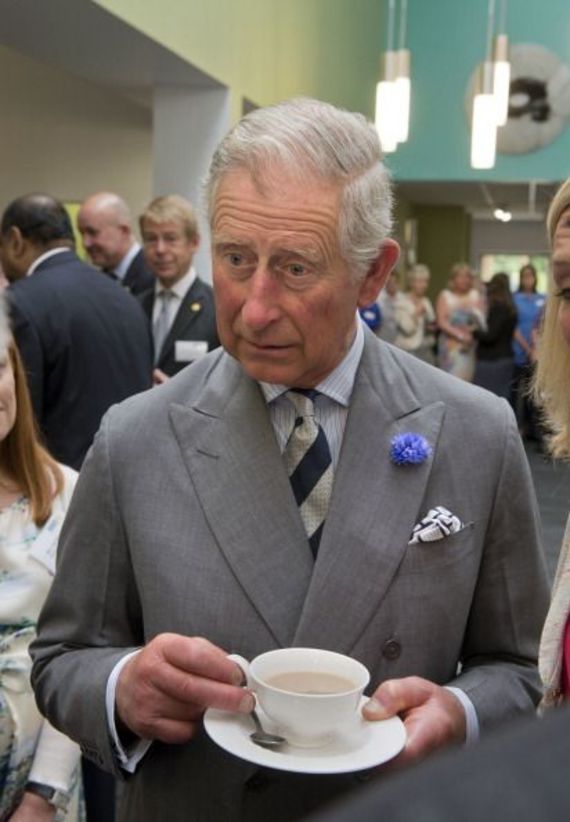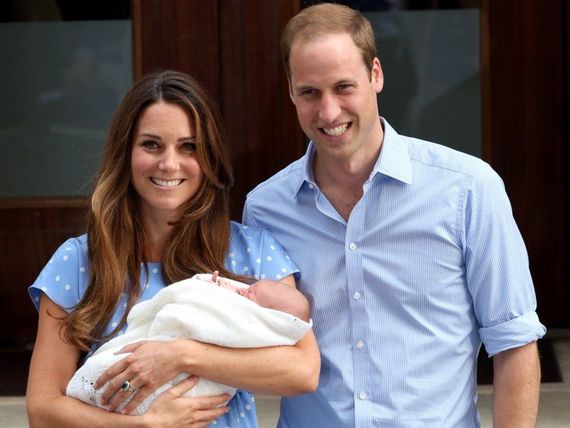
Portrait of Princess Elizabeth holding her baby daughter Princess Anne, with the grandmothers Queen Mary (left) and Queen Elizabeth, following the christening, Buckingham Palace, London, September 1972. (Photo by Central Press/Hulton Archive/Getty Images)Image: Getty Images
BHT explores some of the more outlandish royal birth traditions that we bet you don't know.
Back in 2019, there was a lot of hysteria surrounding the birth of Prince Harry and Meghan Markle’s first child, Archie, and the couple did not particularly follow traditional royal protocols. But rules are made to be broken, right? Take a look at some facts about royal births and how traditions have changed over the years.
No men allowed during the birthing
Royal births were considered a women-only event right up until the middle of the 17th century. Men were forbidden to be in attendance as this was seen as an event only women should witness. And it stayed like this until Prince Philip was present for the birth of Prince Edward.

Midwives took an oath against witchcraft
Nurses, midwives, and ladies-in-waiting were the only people present in the birthing chamber. They were known as ‘God's siblings’ as they cared for the royal mother during labour. They were the sole protectors and handlers of anything related to the royal birth.
Before attending to the royal mother, each woman had to take an oath and swear not to take anything from the room. Anything from the birth itself, such as the umbilical cord or placenta was believed to be used for witchcraft. The oath was to protect the royal mother and newborn baby from this.
Government officials had to be in attendance
The only men who were obligated to be present at royal births were high-ranking government officials, who stood as witnesses. Their role was to make sure the birth was legitimate and that no baby swapping had occurred. This rule was abolished just before Prince (now King) Charles' arrival in 1948.

Prince Philip was the first royal father to watch his child enter the world
The first royal father in modern history to witness the birth of his own child, was Prince Philip when he attended the birth of the couple's fourth child, Prince Edward in 1964, at the invitation of his wife Queen Elizabeth II. Previously, when their first child Prince Charles had been born in 1948, Prince Philip remained in his study awaiting confirmation of the birth from the Queen's medical team. It is said the Queen was keen to highlight the importance of the male’s role as a parent and to involve them from the beginning.
The introduction of St. Mary’s Hospital, Paddington
Before they gave birth in hospitals, all royal babies were born in Buckingham Palace. An exception to this was the birth of Princess Anne, who was born in Clarence House due to the fact that Buckingham Palace was being renovated after experiencing some damage during World War 2.
Coincidentally, in the late 1970s, Princess Anne would be the one to start a trend among royals and have her babies Peter and Zara Phillips at St. Mary’s Hospital. Princess Diana followed suit, and in 1982 Prince William became the first direct heir to the British throne to be born in a hospital.

A Royal announcement
When a new royal baby is welcomed into the world, the announcement is made by an official royal notice placed on a golden easel in the forecourt of Buckingham Palace. William and Kate’s children were the first from the family to be announced via social media in addition to the traditional ways.
There is also a huge celebration in the form of a gun salute. Royal salutes are fired from various locations in London and across the UK. A 41-gun salute by the King's Troop Royal Horse Artillery with a total of 62 rounds around ten minutes firing time.
The act is updated
Upon Prince George’s arrival in 2013, the rules were revised in the Succession to the Crown Act of 2013 so that a monarch’s male and female offspring have an equal right to the throne, and a younger boy could not jump ahead of his older sister in the line of succession. This meant that Princess Charlotte, born in 2015, couldn't be passed by her younger brother Prince Louis when he was born in 2018. She is still third to the throne behind Prince George and Prince William
* Originally published in Apr 2019.





Comments